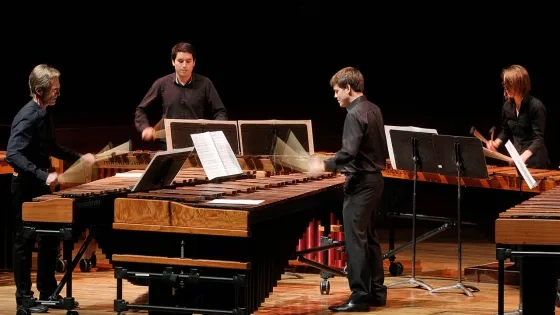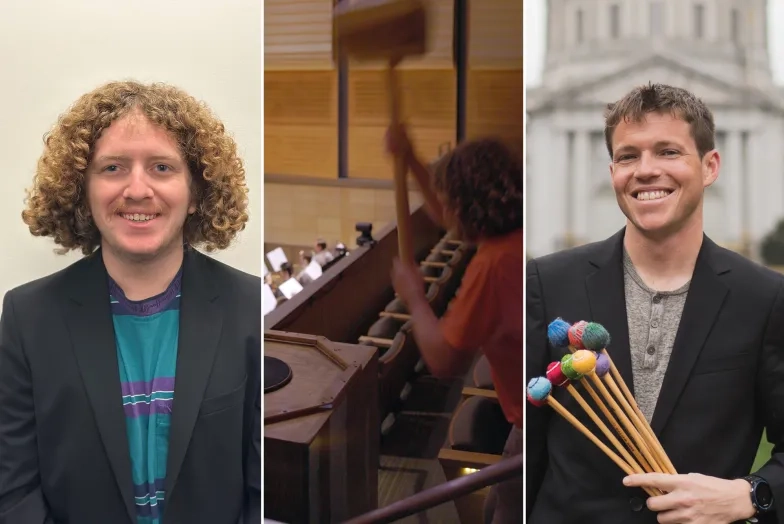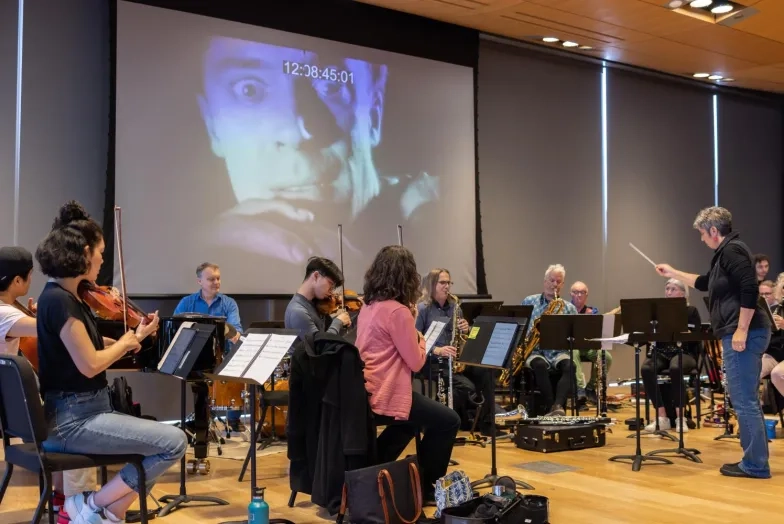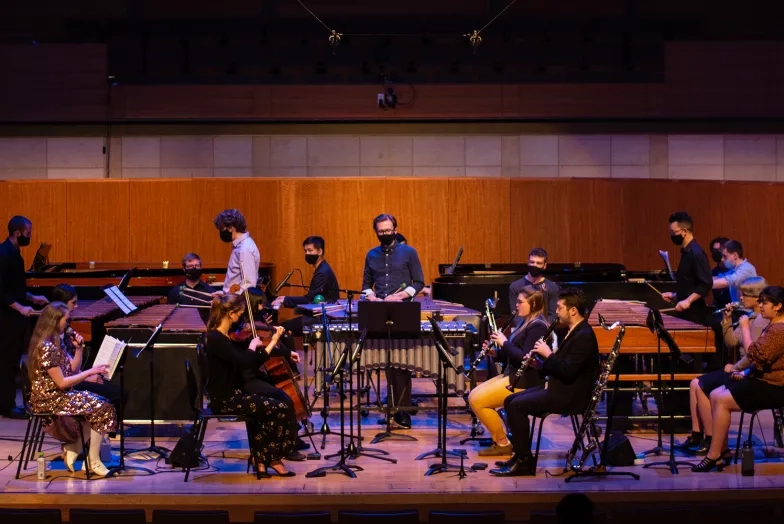SFCM Students Perform Aside Symphony Musicians at Davies Hall
San Francisco Symphony Music Director Michael Tilson Thomas invited SFCM percussion students to participate in his celebration of Steve Reich's 80th birthday. In Davies Hall, Diego Becerra, Yi-Hsuan Lin and Katrina Shore performed Reich's "Six Marimbas" aside San Francisco Symphony musicians, who are current and former SFCM faculty members. This invitation is a first for SFCM students.
The event received wonderful reviews, two of which went out of their way to commend our percussion students on their performance. On "Six Marimbas", Georgia Rowe of The Mercury News says "Symphony percussionists Jack Van Geem and Jacob Nissly, joined by San Francisco Conservatory of Music percussion students Raymond Froehlich, Yi-Hsuan Lin, Diego Becerra and Katrina Shore, gave a terrific performance, immersing the listener in Reich's waves of liquid sound and subtle rhythmic shifts."
Leah Garchik of the San Francisco Chronicle interviewed Katrina Shore and included the following quote in her review "‘Playing the music is mentally demanding,' said Shore. ‘There's no downbeat, but you still have to lock in with each other. You can get messed up really easily.' They didn't."
We asked our students to share their experience working with Reich and members of the San Francisco Symphony. Here's what they had to say.
Before this performance, how familiar were you with Steve Reich's music?
Diego Becerra: Before this concert, I played some Steve Reich's compositions like "Sextet" or "Music for pieces of wood", probably most of percussionists know or have played some of his pieces. But this, time he was in one of our rehearsals and we could work with him! It was just awesome!
What was it like rehearsing Six Marimbas? Were there any surprises that came up as you were preparing the piece?
Yi-Hsuan Lin: First of all, I would like to thank my professor Jack Van Geem for giving me this great opportunity. The single marimba part is simple in a repeated pattern. However, while putting the six parts together, I was amazed at the complex interweaved rhythmic pulse it created. We tried to not emphasize the downbeats and let the listeners to decide what the pulse should be.
What sort of feedback did you receive from Steve Reich during rehearsal?
Katrina Shore: For the most part Reich wanted the piece to have high energy - more than what it had when we played it for him initially. We had been focusing a lot on keeping clarity of the notes and the parts but he was less concerned with those things. He wanted more volume, more speed, and ultimately more intensity.
What challenges does this work present that others don't?
Yi-Hsuan Lin: Besides keeping the energy and interweaved rhythmic pattern throughout the piece, Six Marimbas left a lot of indeterminacy to the performers, although Reich has specific instructions on the big structure of the piece. For example, in the beginning, the solo parts were built up by adding one eighth note measure by measure. Reich let the performer to decide how many times he or she wants to repeat before going to the next bar, but one needs to join the other player in the next bar right after the change. Therefore, the fun part is the performer needs to pay lots of attention to another player, and create different versions of Six Marimbas every time this piece is performed.
You performed side by side with San Francisco Symphony musicians. Were you given any good — or unique — advice during rehearsals?
Katrina Shore: I think it was the way they rehearsed - interacted with the music and with each other - that gave me new insight. Any comments exchanged were given and received eagerly and respectfully. In the end, their combined insight made the music much more effective.



